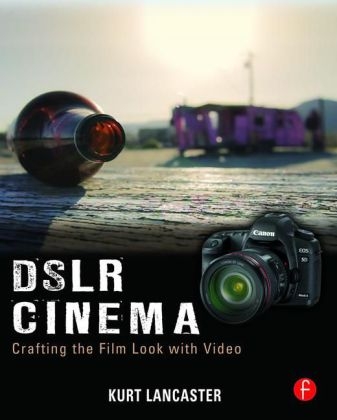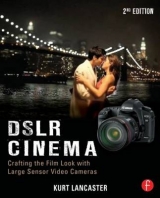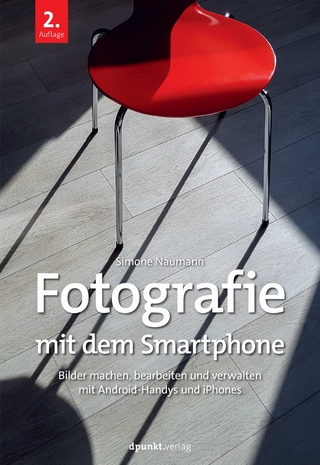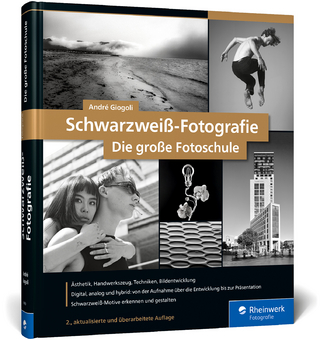
DSLR Cinema
Focal Press (Verlag)
978-0-240-81551-0 (ISBN)
- Titel erscheint in neuer Auflage
- Artikel merken
Video-capable DSLR cameras give filmmakers a quality previously impossible without high-end cinema cameras. Exploring the cinematic quality and features offered by hybrid DSLRs, this book empowers the filmmaker to craft visually stunning images inexpensively.
Learn to think more like a cinematographer than a videographer, whether shooting for a feature, short fiction, documentary, video journalism, or even a wedding. DSLR Cinema offers insight into different shooting styles, real-world tips and techniques, and advice on postproduction workflow as it guides you in crafting a film-like look.
Case studies feature an international cast of cutting edge DSLR shooters today, including Philip Bloom (England), Bernardo Uzeda (Brazil), Rii Schroer (Germany), Jeremy Ian Thomas (United States), Shane Hurlbut, ASC (United States), and Po Chan (Hong Kong). Their films are examined in detail, exploring how each exemplifies great storytelling, exceptional visual character, and how you can push the limits of your DSLR.
Kurt Lancaster has shot documentaries that have screened nationally and internationally. He has also consulted for the Pulitzer Prize winning newspaper, The Christian Science Monitor, training some of their print journalists in video journalism, as well as shooting and editing documentary journalism pieces. He is also an assistant professor of digital media in the School of Communication at Northern Arizona University, where he teaches courses on documentary multimedia production, scriptwriting, and production techniques. Kurt earned his PhD from New York University. His students have gone on to earn video journalism awards, screen documentaries at film festivals, as well as creating independent video companies. Dr. Lancaster's essays and articles on journalism, popular culture, performance, and communication have appeared in the International Journal of Communication, the Performing Arts Journal, Modern Drama, Journal of Popular Culture, Journal of American Culture, and The Christian Science Monitor. His previous books include: The Documentary Journalist: The Art and Craft of Video Journalism for the Web. Building a Home Movie Studio and Getting Your Films Online (Watson Guptill, 2002). Warlocks & Warpdrive: Contemporary Fantasy Entertainments with Interactive and Virtual Environments (McFarland, 1999).
Part I Using the Cinematographer's Toolkit to Craft Astounding Images with DSLRs
Chapter 1 Composition, Blocking and Camera Movement
Chapter 2 Lighting
Chapter 3 Tonal Scale, Exposure, and Lenses
Chapter 4 Using Picture Styles
Chapter 5 Recording Quality Audio
Chapter 6 Postproduction Workflow and Techniques
Part II Master DSLR Shooters at Work
Chapter 7 Case Study 1: Getting the Film Look in a Short Fiction: Casulo (2009), directed by Bernardo Uzeda, Brazil, 17 min.
Chapter 8 Case Study 2: Getting the Film Look in Documentary Journalism: 16 Teeth: Cumbria's Last Traditional Rakemakers (2009), directed by Rii Schroer, England, 2:29 min.
Chapter 9 Case Study 3: Getting the Film Look in a Short Documentary: A Day at the Races (2010), directed by Philip Bloom, United States, 6 min.
Chapter 10 Case Study 4: Getting the Film Look in a Short Fiction: Chrysalis (2010), directed by Jeremy Thomas, United States, XX min.
Chapter 11 Case Study 5: Getting the Film Look in a Short Fiction: The Last Three Minutes (2010), directed by Po Chan and Shane Hurlbut, ASC, United States, 3:37 min.
Part III Getting the Gear and Telling Your Stories
Chapter 12 DSLR Cinema Gear by Budget
Chapter 13 How to Tell Better Stories with Your DSLR
Afterword by Philip Bloom
Appendix I Image Resolution
Appendix II ISO Tests for the Canon 5D Mark II and 7D
Appendix III Exposure and Dynamic Range
Appendix IV Luminance and Chrominance Compression
| Zusatzinfo | 300 Halftones, color |
|---|---|
| Verlagsort | Oxford |
| Sprache | englisch |
| Maße | 190 x 234 mm |
| Gewicht | 794 g |
| Themenwelt | Kunst / Musik / Theater ► Film / TV |
| Sachbuch/Ratgeber ► Freizeit / Hobby ► Fotografieren / Filmen | |
| ISBN-10 | 0-240-81551-3 / 0240815513 |
| ISBN-13 | 978-0-240-81551-0 / 9780240815510 |
| Zustand | Neuware |
| Haben Sie eine Frage zum Produkt? |
aus dem Bereich



